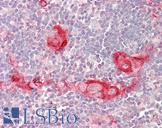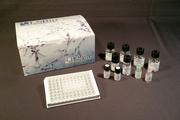Login
Registration enables users to use special features of this website, such as past
order histories, retained contact details for faster checkout, review submissions, and special promotions.
order histories, retained contact details for faster checkout, review submissions, and special promotions.
Forgot password?
Registration enables users to use special features of this website, such as past
order histories, retained contact details for faster checkout, review submissions, and special promotions.
order histories, retained contact details for faster checkout, review submissions, and special promotions.
Quick Order
Products
Antibodies
ELISA and Assay Kits
Research Areas
Infectious Disease
Resources
Purchasing
Reference Material
Contact Us
Location
Corporate Headquarters
Vector Laboratories, Inc.
6737 Mowry Ave
Newark, CA 94560
United States
Telephone Numbers
Customer Service: (800) 227-6666 / (650) 697-3600
Contact Us
Additional Contact Details
Login
Registration enables users to use special features of this website, such as past
order histories, retained contact details for faster checkout, review submissions, and special promotions.
order histories, retained contact details for faster checkout, review submissions, and special promotions.
Forgot password?
Registration enables users to use special features of this website, such as past
order histories, retained contact details for faster checkout, review submissions, and special promotions.
order histories, retained contact details for faster checkout, review submissions, and special promotions.
Quick Order
| Catalog Number | Size | Price |
|---|---|---|
| LS-C148235-50 | 50 µl | $386 |
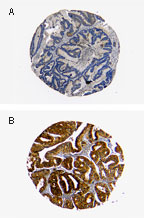
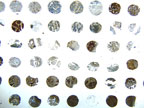
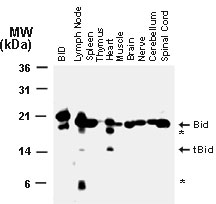



1 of 3
2 of 3
3 of 3
Polyclonal Rabbit anti‑Mouse BID Antibody (IHC, WB) LS‑C148235
Polyclonal Rabbit anti‑Mouse BID Antibody (IHC, WB) LS‑C148235
Antibody:
BID Rabbit anti-Mouse Polyclonal Antibody
Application:
IHC, IHC-P, IHC-Fr, WB, IP
Reactivity:
Mouse, Human, Rat, Dog, Gerbil
Format:
Unconjugated, Unmodified
Toll Free North America
 (800) 227-6666
(800) 227-6666
For Research Use Only
Overview
Antibody:
BID Rabbit anti-Mouse Polyclonal Antibody
Application:
IHC, IHC-P, IHC-Fr, WB, IP
Reactivity:
Mouse, Human, Rat, Dog, Gerbil
Format:
Unconjugated, Unmodified
Specifications
Description
BID antibody LS-C148235 is an unconjugated rabbit polyclonal antibody to BID from mouse. It is reactive with human, mouse, rat and other species. Validated for IHC, IP and WB.
Target
Mouse BID
Synonyms
BID | Apoptic death agonist | BID isoform L(2) | BID isoform Si6 | Bh3 | FP497 | p22 BID | BID isoform ES(1b) | Desmocollin type 4 | Human BID coding sequence
Host
Rabbit
Reactivity
Mouse, Human, Rat, Dog, Gerbil
(tested or 100% immunogen sequence identity)
Clonality
Polyclonal
Conjugations
Unconjugated
Purification
Antiserum
Modifications
Unmodified
Immunogen
Full length recombinant mouse Bid protein.
Specificity
Full-length Bid is known to undergo cleavage/truncation (reviewed in Yin, 2006). Bid was initially found to be cleaved and activated by caspase-8 following death receptor activation. The term "Bid" was first used to described the caspase-8 cleaved/truncated C-terminal Bid. Bid can be also cleaved by other proteases such as Granzyme B, calpains and cathepsin. The C-terminal portion is considered to be the active Bid moiety. This active form can translocate from the cytosol to the mitochondria. Therefore, the appearance of Bid in the mitochondria is considered to be an indication of active Bid. However, it should also be noted that Bid has been shown to translocate to the mitochondria without cleavage in some model systems. The proteolytic cleavage of Bid usually occurs in the unstructured loop region between the alpha 2 and alpha 3 helices, which is between amino acids (aa) 41 and 79 of Bid. For example, the caspase-8/3 cleavage site is at 60 (human) and 59 (mouse). It should be noted that after cleavage, the smaller N-terminal portion of Bid is not necessarily separated from the larger C-terminal portion. The exact size of the C-terminal cleavage products depends on the Bid cleavage sites; generally 11-15 kD C-truncated cleavage forms are generated. Shorter C-terminal Bid cleavage products may result from protease cleavage that involves both caspases and other proteases. Full length Bid is quite stable, but cleaved/truncated forms may have a short half-life (less than 1.5 h) and degrade rapidly. Therefore, a time course may be useful when detecting Bid cleavage fragments.
Applications
- IHC
- IHC - Paraffin (1:1000 - 1:5000)
- IHC - Frozen
- Western blot (1:1000 - 1:2000)
- Immunoprecipitation (1:50 - 1:200)

|
Performing IHC? See our complete line of Immunohistochemistry Reagents including antigen retrieval solutions, blocking agents
ABC Detection Kits and polymers, biotinylated secondary antibodies, substrates and more.
|
Presentation
Antiserum, 0.05% sodium azide
Storage
Store at -20°C. Aliquot to avoid freeze/thaw cycles.
Restrictions
For research use only. Intended for use by laboratory professionals.
About BID
Publications (0)
Customer Reviews (0)
Featured Products
Species:
Human
Applications:
IHC, IHC - Paraffin, Immunofluorescence, Western blot, Peptide Enzyme-Linked Immunosorbent Assay
Request SDS/MSDS
To request an SDS/MSDS form for this product, please contact our Technical Support department at:
Technical.Support@LSBio.com
Requested From: United States
Date Requested: 3/13/2025
Date Requested: 3/13/2025

